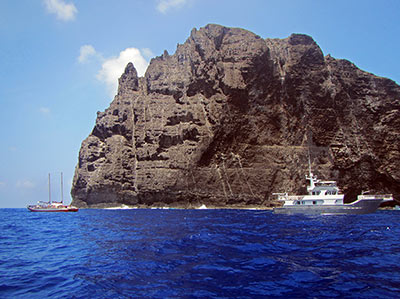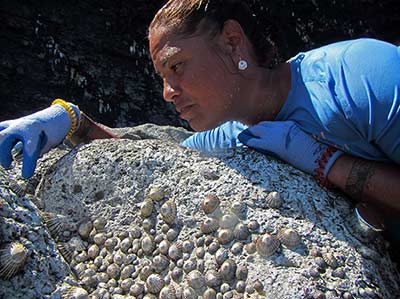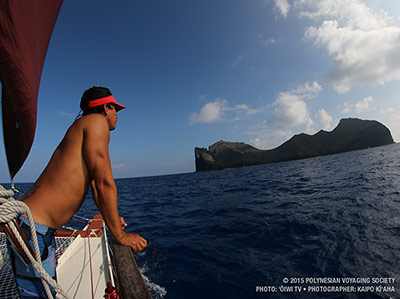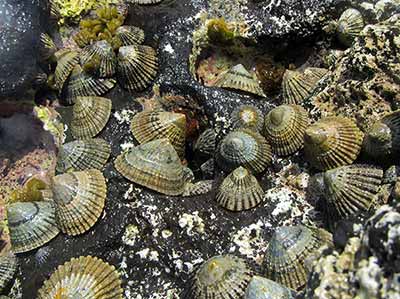Science and Culture Come Together in First Joint Expedition to Papahānaumokuākea
On July 7, 2015, 26 participants returned from Papahānaumokuākea Marine National Monument having completed the first-ever joint expedition expressly combining traditional navigators, cultural practitioners, and government and university researchers.
The Polynesian double-hulled sailing canoe Hikianalia and modern research vessel Searcher embarked on an expedition to conduct navigator training for future legs of the Polynesian Voyaging Society's Mālama Honua Voyage, shoreline ʻopihi (Hawaiian limpet) counts, reef fish surveys, and exchange of ideas on how to better manage Hawaii's marine resources.
Hikianalia's voyage to Nihoa was yet another step toward the important and necessary transition of leadership to the next generation of voyagers and navigators. Once at Nihoa, team members from Hikianalia and the Searcher surveyed reef fish habitat, conducted ʻopihi monitoring, and offered mele (chants) and hoʻokupu (gifts) to honor the islands.
Chris Bird, Ph.D. and Patricia Crockett, researchers with Texas A&M University, continued their years of research on ʻopihi, finding 99.9% more of the limpets on the shorelines of the Monument than those of Oʻahu. This ongoing research continues to provide managers with insights into how to make better-informed management decisions concerning ʻopihi harvesting in the Main Hawaiian Islands.
The expedition was sponsored by the Office of Hawaiian Affairs, NOAA's Office of National Marine Sanctuaries, Polynesian Voyaging Society, Texas A&M University, The University of Hawaiʻi-Hilo, The Nature Conservancy, Conservation International Hawaiʻi, Kipahulu ʻOhana, Na Mamo o Muoleʻa, and Na Maka o Papahānaumokuākea.
Read the press release.
See more images and video.




